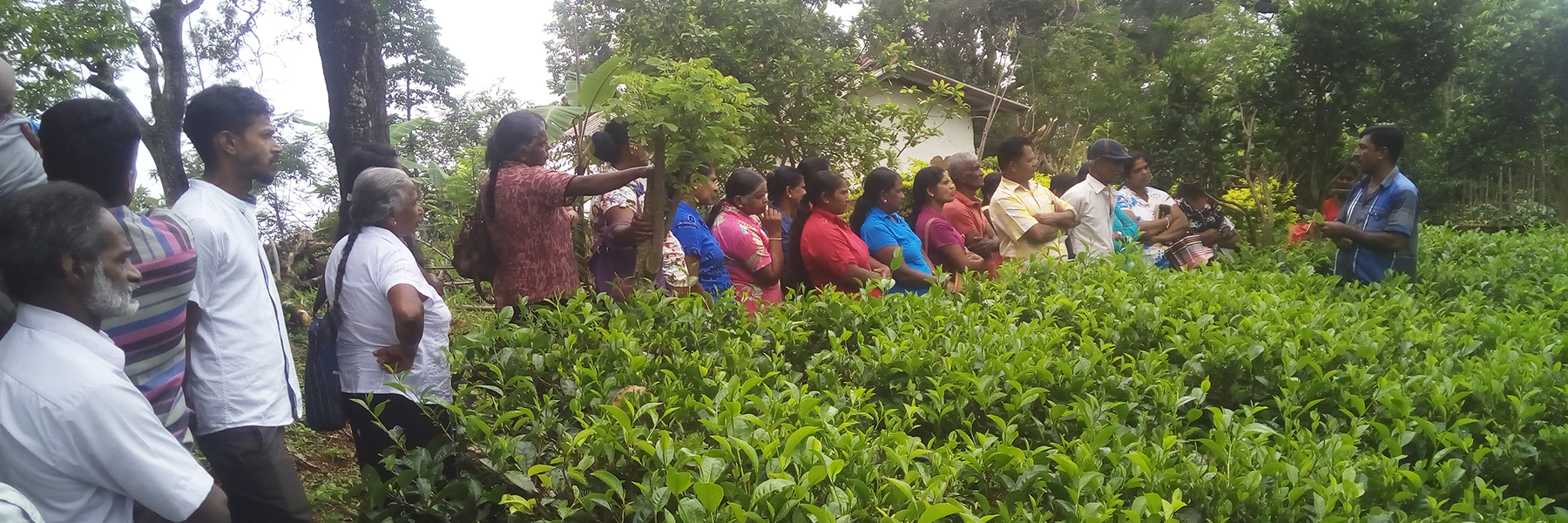Primary sources of data pertaining to this project was scarce, therefore information was also collected from Dr. Somasiri Dayaratne (Former Project Director Kandy and Mr. Bandula Hennadige (Former Project Director “1991-1997 Second Phase Badulla IRDP” and “19972000 Kandy IRDP Project”). Information collected from them was aggregated with information that was collected from Spreeuwenberg, (1987).
Overall Focal Area:
Poverty alleviation, developing agricultural production, irrigation development, infrastructure, livestock development ground water exploitation, rural water supply, health, education but these varied from district to district.
Geographical coverage: National
Summary:
World Bank initiated this project in 1976 and started the first project in Kurunegala District with above objectives. By 1980 it spread to Nuwara-Eliya District and by 1988 IRPD projects started in 16 districts out of 24 districts in the country. Even though the World Bank initiated this projects later, FINNIDA, JICA, IFAD, German government funding and the Netherland Government funding conveyed for the projects in each district. Approximations are provided in italics regarding dates and budgetary information if information does not match.
I. Nuwara Eliya District
In 1982 IRDP started in Nuwara–Eliya district. Funded by The Netherland Government 1982-1995.
Focal Area: Sectors irrigation, agriculture, and infrastructure development
Duration: 1982-1995
Implementing agency: Department of Agriculture and Department of Irrigation
Donor/source of funding: The Netherland Government
Budget: Budget Rs.520 million
Brief summary of activities and relevance to SLM FAO project extracted from (Spreeuwenberg, 1987)
The project was implemented in 1984 in the Nuwara Eliya district by the Department of Agriculture and the IRDP Project. The objectives of this programme included soil conservation, farm improvements and institutional development. The project area of this programme was initially the Randenigala catchment and areas of the Walapane and Hanguranketha Divisional Secretariat Division.
Abandoned Chena lands were targeted to practice a mixture of Chena practice and home garden types. The project consists of (a) subsidizing of construction of physical soil conservation measures, and free distribution of planting materials and seedlings of perennial crops, (b) Introduction of cattle sheds biogas units, water tanks, and bee boxes by way of trail and demonstration (c) Creation of credit societies as a means of organizing the farmers adding their investment opportunities and boosting selfsustaining process of development.
II. Badulla District
Focal Area: sectors social mobilization and small irrigation system development
Duration: First Project1980-1990, Second Project 1991-2000
Donor: International Fund for Agriculture Development (IFAD), The education component of the First Project Funded by Swedish International Development Cooperation Agency (SIDA)
Budget: Rs.610 million
Brief summary of activities and relevance to SLM FAO project:
The main focus of the First Project was on the development of agriculture, irrigation, roads, water supply, education and health. The Second Project was focused on strengthening of institutions, development of agriculture, development of physical infrastructure and improving financial services.
III. Kandy District
Focal Area: Micro-finance, road development and entrepreneurship development
Duration: 1982-1995
Donor: Development for International Development Cooperation (FINNIDA), Finland & German Government (1982) / Japan International Cooperation Agency (JICA) (1985- 1995)
Budget: Rs.35-50 Million
Brief summary of activities and relevance to SLM FAO project:
Village development projects were conducted in the Divisional Secretariat Divisions of Pathahewaheta, Udadumbara, Medadumbara and Gangaihala Korale. The main sectors of interest were agriculture, animal husbandry and small scale infrastructure activities. Subsequently, the third phase of the project focused on the development of enterprises and the private sector.

